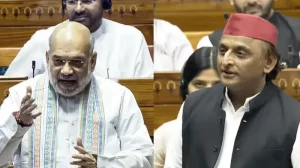
Former Prime Minister Manmohan Singh passed away on Thursday at the age of 92.
Manmohan Singh was the Prime Minister of India for two consecutive terms and enjoyed a clean personal image.
He is credited with economic reforms in India whether it was his tenure as Prime Minister from 2004 to 2014 or his work as Finance Minister before that.
Manmohan Singh was born on 26 September 1932 in the Punjab province of undivided India. This part is now in Pakistan. After studying from Punjab University, he did his Masters from Cambridge University and D. Phil from Oxford.
Manmohan Singh emerged as the Finance Minister of India in the year 1991, this was a time when the economic condition of the country was very bad.
His unexpected appointment gave new heights to his long and successful career. He not only worked as an academician and bureaucrat, but also contributed as an economic advisor to the government and was also the Governor of the Reserve Bank of India.
In 1991, while being the Finance Minister in the Narasimha Rao government, Manmohan Singh made important announcements related to liberalization, privatization and globalization in the Union Budget, which gave a new impetus to the Indian economy.
Changes were made in the rules and regulations related to trade policy, industrial licensing, reforms in the banking sector and permission for foreign direct investment (FDI) in the country. As Finance Minister, he reduced taxes, devalued the rupee, privatized government companies and promoted foreign investment.
This boosted the economy, industries grew rapidly, rising inflation was controlled and the growth rate remained consistently high in the 1990s.
But Manmohan Singh knew very well that he did not have a political mass base.
When he tried to win the Lok Sabha elections in 1999, he was disappointed. However, the Congress sent him to the Rajya Sabha.
The same happened in 2004. Manmohan Singh became PM when the then Congress President Sonia Gandhi refused to become the Prime Minister.
The biggest achievement of Manmohan Singh was the nuclear agreement with America in his first term as Prime Minister. With this historic agreement India got access to America’s nuclear technology.
But Manmohan had to pay a price for the deal. The leftist parties supporting the Manmohan Singh government withdrew their support.
Congress had to work hard to garner majority. It had to take support from other parties.
In the 2009 Lok Sabha elections, UPA got 262 seats. Once again, a round of speculations started regarding the name of the Prime Minister. Rahul Gandhi‘s name was raised in the political corridors. Manmohan Singh had put a condition in front of Sonia that he would take the post again only if he gets a chance to complete his term as Prime Minister.
After this, Rahul had assured him that he had no desire to become the Prime Minister. After this Manmohan took the post of Prime Minister again (22 May 2009 – 26 May 2014).
As a hard-working former teacher and bureaucrat, he was known for his modesty and calm demeanour. His Twitter account (x) was known for its simple posts and had a low following.
Manmohan Singh was a man of few words. He always appeared calm. These aspects of his personality won him many admirers.






